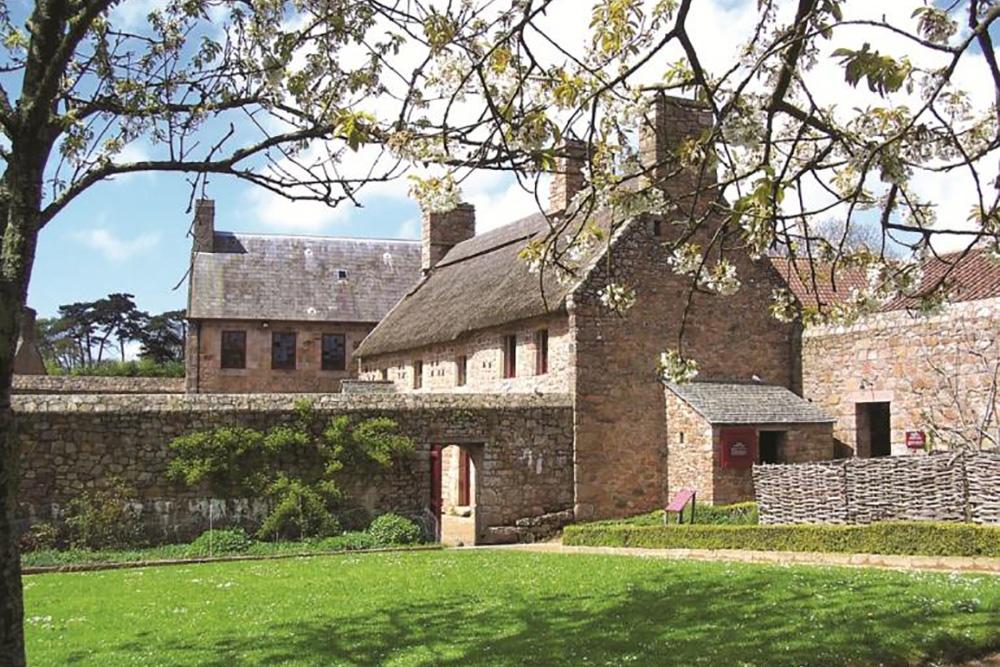Hamptonne Country Life Museum is a unique insight into the rural life carried on in Jersey for centuries. The house and farm date back to the 15th Century. Jersey’s history of cider making is illustrated through the cider barn and the apple orchard. In the traditional farmstead calves, lambs, chickens and piglets show Jersey’s agricultural past.
Part of the grounds include Syvret House, a decorated and furnished farmhouse gives a unique window into 1940s rural life, including; agricultural traditions, day-to-day family life, language, religion and the experience of the German Occupation.
The Hamptonne farm complex takes its name from Laurens Hamptonne, who purchased it in 1633. The property is also known as ‘La Patente’, as is the name of one of the roads that passes it, after the Grants by Letters Patent received by its owner Richard Langlois in 1445, and by King Charles II to Laurens Hamptonne in 1649.
THE HOUSES AND COURTYARDS
Overall the site is square in shape. It includes ranges of buildings built in different periods, arranged around two courtyards. While the farm has medieval origins, consecutive owners have made marked improvements to the living accommodation. The main buildings are therefore named after the Langlois, Hamptonne and Syvret families, who lived here between 15th and 19th centuries.
When you exit the shop, you enter the North Courtyard along the side of which runs the Northern Range – a row of 19th century farm buildings constructed to meet the requirements of the agriculture workforce, its vehicles and horses. It include a Labourers Cottage, Coach House, Bake House & Laundry, and Stables. Facing the Stables is a glazed barn in which important farming devices and implements are displayed. There is a walled vegetable and herb garden to the east, beyond which is the Hamptonne Playground and Cider Apple Orchard.
To the south is Langlois House, which comprises stabling and an undercroft on the ground floor, and a parlour and bedroom on the first floor. At the south-west corner is a twin-arched stone gateway providing access to the roadway. To the south of Langlois House are the pigsties and a spring-fed pond.
To the west is the Cider House or pressoir with its granite apple crusher and press; to the southern end of this row is Syvret House which consists of a kitchen, parlour, two bedrooms and a small cabinet. The House is presented as the home of a tenant farmer around 1948.

CIDER APPLE ORCHARD
To the east of the farm complex is the Cider Apple Orchard, which consists of apple trees chosen for their sweet, bitter and sharp flavours to provide a good balance for cider making when mixed together. The footpath through the orchard takes you into a small area of woodland. Wooded areas at the back of farms provided an important source of wood for fuel and building materials, while also supporting a rich variety of plants and wildlife. Follow the footpath down to the grazing Meadow and, if you wish, continue on the public footpath that joins the National Trust for Jersey’s Toad Trail.

Tom Kennedy
Tom Kennedy is a local photographer, who is influenced by the Dutch Masters paintings of the 17th century, including Rembrandt and Vermeer. His photos with living history characters focuses on using natural lighting to stay within the time periods of the characters.



Alex : good development here, keep working hard!